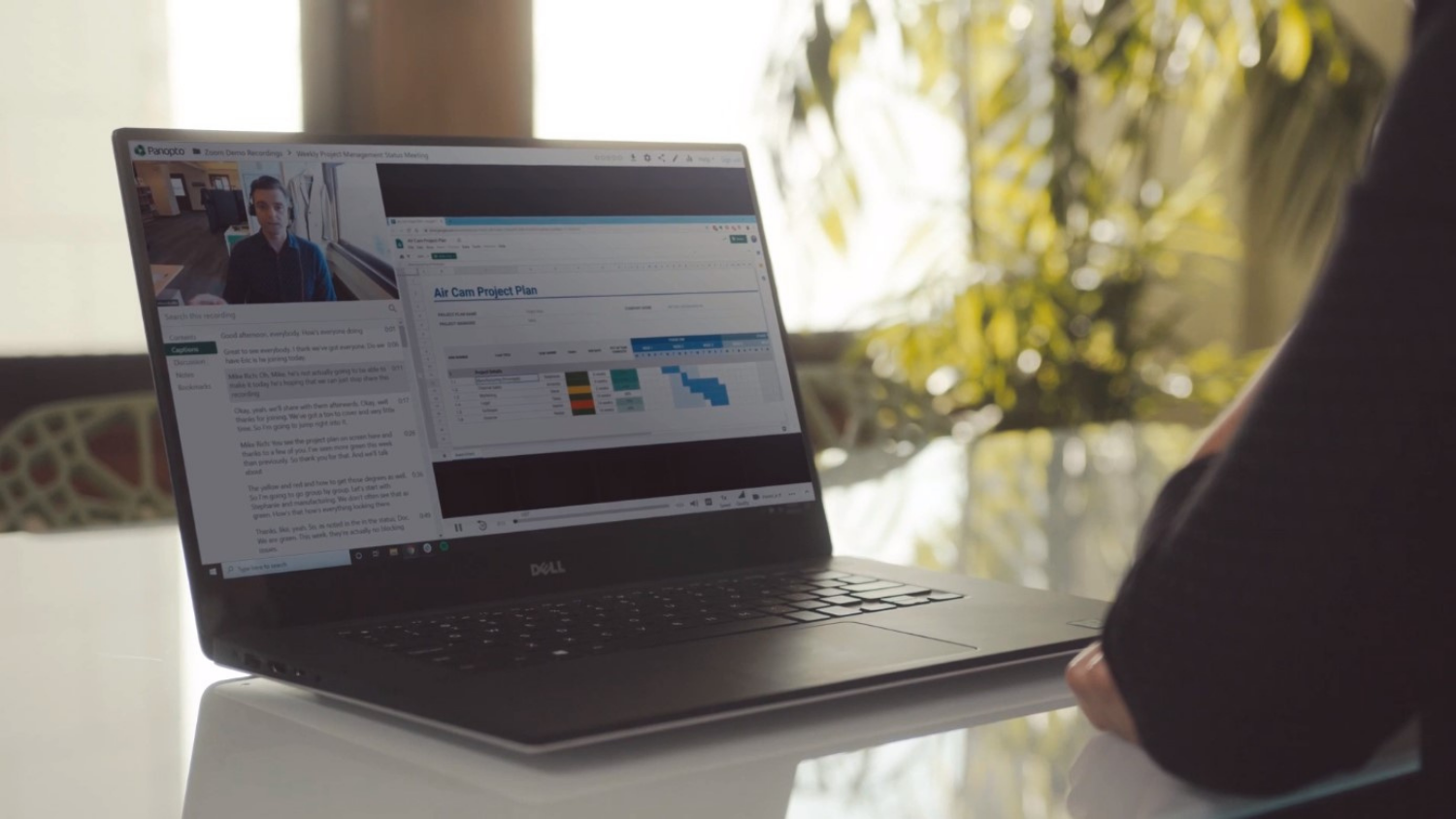Zoom Recordings and Student Privacy

Zoom meetings can be recorded either to the cloud (stored on Zoom’s servers) or locally (stored on one’s hard drive or computer). It is common for workshops, webinars, presentations and meetings to be recorded for later viewing. Recording class meetings in Zoom offers advantages to students –– it allows enrolled students who miss class or have network issues to access course material and enables all enrolled students to review material after a class meeting. Instructors might record guest speakers or their own lectures to share more widely or with classes in future semesters. It is recommended that class meetings be recorded to the cloud for easy sharing and to take advantage of the automatically-generated transcripts.
When recording class meetings in Zoom, student privacy is a critical factor to consider. Federal law and university policy (see Reg 11.00.01 Family Education Rights and Privacy and Reg 02.20.07 Course Syllabus regulation, section 2.12.1) dictate that instructors cannot capture student data (including video) from a course and share it outside of the currently enrolled students in that course and section without permission. Instructors should be aware that Zoom cloud recordings can capture student data in several ways.
- Student videos can be captured when the gallery view is recorded or when the active speaker is recorded and students are not muted.
- If students annotate on the screen and the names of annotators are not hidden, their names will appear in the recording of the shared screen.
- If students participate in the chat and the chat is saved to the cloud, their names will appear in the file.
- The auto-generated transcript will identify anyone whose microphone input is picked up by Zoom during a recorded meeting, whether they are speaking or a loud noise is detected from their microphone.
How can an instructor record Zoom class meetings and also comply with student privacy regulations? There are several options, and instructors should choose the one that best fits their needs. For any of these options, instructors must include their Zoom recording plans in their course syllabus.
Option 1: Only share the class recording with students currently in the course.
Posting a link to a class recording on the course’s Moodle page and reminding students not to share the recording link with others is the easiest way to comply with the policies. However, it does not allow a recording to be reused another semester or shared with a wider audience. Instructors should indicate in their syllabus that class meetings will be recorded but not shared outside of the class roster.
Option 2: Ask for student permission before capturing the class meeting to be shared more widely, and provide alternatives for them if they decline.
To comply with the syllabus regulation, instructors should state in the syllabus that class recordings may be shared with people outside of the class roster and should ask ahead of time for any student who is unwilling to participate to reach out to them to discuss alternatives. Some ideas for alternatives for students who do not wish to be recorded include requiring them to watch the recording later and complete asynchronous activities that allow them to accomplish learning objectives in the same way that live participation would have achieved. Another option is to excuse a student who has declined from any participatory activity (see more details in Option 3 for this alternative). Zoom cloud recording settings include the ability to turn on a “Recording disclaimer” and select “Ask participants for consent when a recording starts.” When this is enabled and a host begins recording, participants will be alerted and given the option to consent or leave the meeting.
Option 3: Take necessary steps to prevent capturing of any student data in a Zoom class recording.
Some settings in Zoom (under the “Recording” tab), combined with options within a meeting, can prevent capturing any identifying participant details. Note that Zoom settings must be selected before the meeting is started in order to take effect for future meetings you host. Two possible scenarios for this option are outlined below.
Scenario 1: Follow these four steps to prevent any student data from being captured and shared in the meeting recording.
- Do not include the gallery view in your recording. In your Zoom settings (under the “Recording” tab), ensure “Record gallery view with shared screen” is deselected, and “gallery view” is not checked anywhere else.
- Either disable the chat while recording (under the Security icon on the toolbar), or do not save the chat to the cloud (deselect “Save chat messages from the meeting/webinar” in your Zoom settings under the “Recording” tab).
- Ensure that you are the only speaker while recording. Before you start to record, spotlight your video. Also, open the participant’s panel and click “Mute all” at the bottom. Deselect “Allow participants to unmute themselves” in the dialog box.
- Ensure that student names are not displayed through annotation. Either disallow annotation on a shared screen, or hide names of annotaters (both found under the “more” menu in the floating toolbar/share screen menu when sharing your screen).
Scenario 2: Prevent only select students who decline to be captured from being recorded.
You might use this option if you want to share student discussions or presentations more widely, but some students decline to give permission to be captured. Follow all steps below to prevent capturing and sharing select students’ data.
- Excuse the student from participatory activities like annotating or using their microphone. Allow them to participate by chat instead, but deselect “Save chat messages from the meeting/webinar” in your Zoom settings under the “Recording” tab.
- To prevent video and audio capture, open the participant’s panel before you start to record and find the student’s name. Click “Mute” to disable their audio. Then, hover over the student’s name and select “Stop Video” from the drop-down menu.
- Either do not include the gallery view in your recording (see item 1 above), or prevent capture of student names and profile pictures when recording gallery view by deselecting “Display participants’ names in the recording” in your Zoom settings (under the “Recording” tab) and clicking “Hide profile pictures” under the Security icon during your meeting.
Option 4: Segment your class meeting into private recordings and ones you can share.
Designate portions of the class meeting for lecture (which can be shared more widely) and portions for student interaction (which are only shared within the class roster). During the lecture portion, prevent student participation (mute all, spotlight yourself, disallow annotation). Between segments, stop and then restart recording. Stopping and starting a Zoom recording results in separate recording files for each segment with a link for each segment of the video which can be shared with appropriate audiences. If you don’t wish to record the student participation at all, simply pause the recording during that segment of the class and resume for the next lecture section. Pausing and resuming a Zoom recording results in one video file that omits the portion of the meeting that was paused (i.e. when students were participating).
Summary
The ability to record your Zoom class meeting has lots of advantages but also has potential issues if student data and identifiers are captured in a recording that might later be shared outside of the current class roster. Always let your students know if you are recording, and follow steps to protect student privacy. Think about why you are recording and be purposeful in your recording plans. Above all, treat recordings that include student data and identifiers as FERPA-protected assets. Reach out to DELTA if you have any questions. We are here to help!


